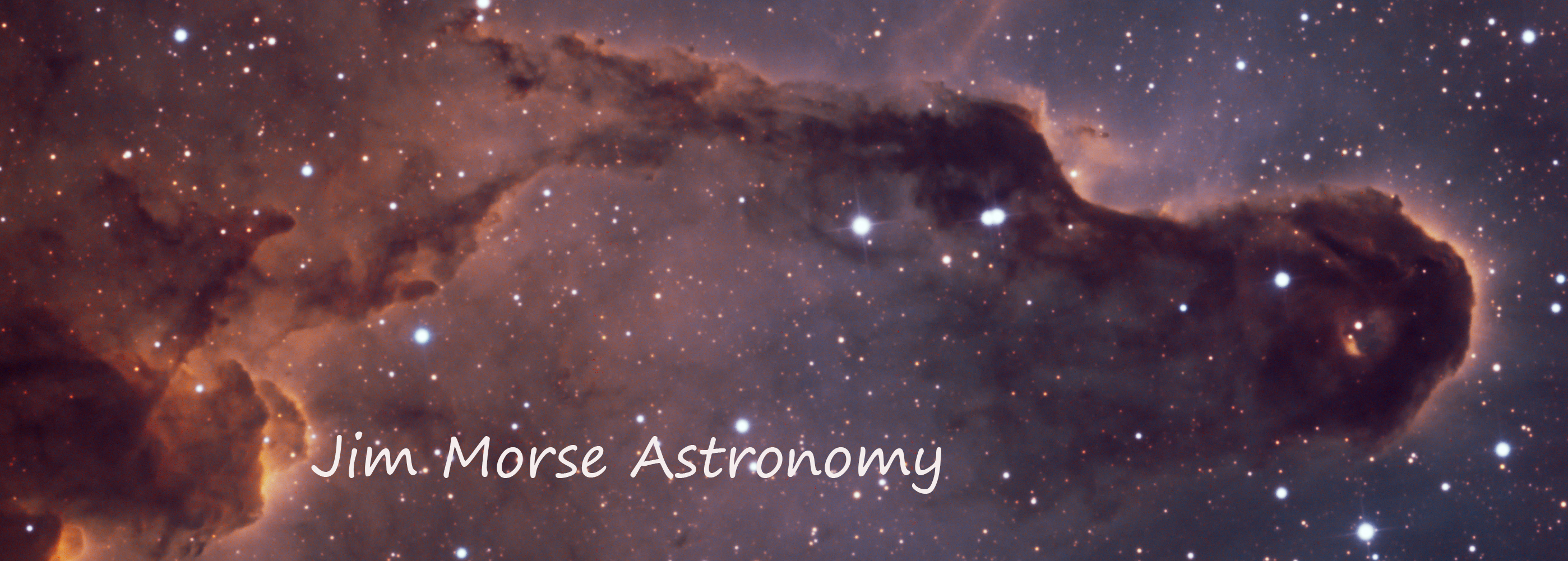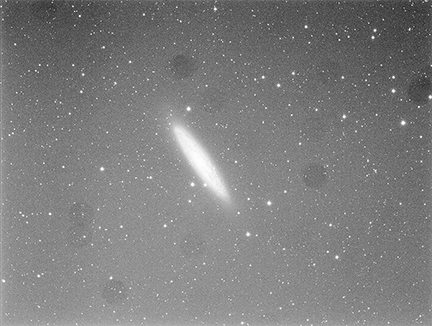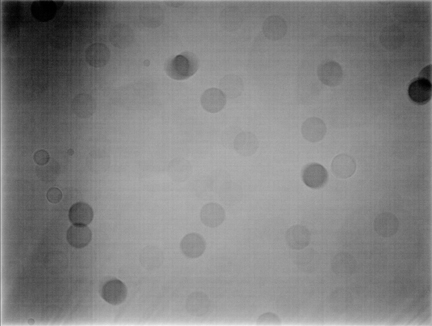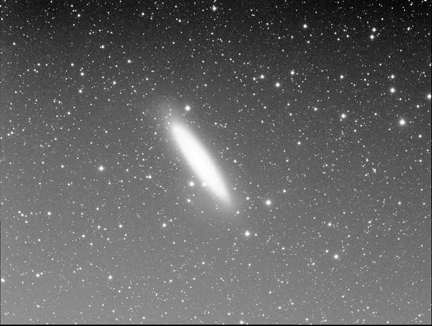Learnings
This page is designed to be a semi-random review of various issues I encountered when starting out that may help you improve your images. As always, if you have any questions or comments regarding the content of this page, please feel free to contact me at jkmorse57@gmail.com.
Why do I need to be so precise in making dark frames?
In Part I of my article on Image Processing I mention early on that you must get your darks right, particularly regarding tempurature, or you are better off without them. As an example, take a look at the image below:
Obviously this is M104, the Sombrero Galaxy in Virgo. This is a highly blown up portion of one image in a series I took back in March of 2011 with my Canon 40D and my NP101is. Look at it closely. While it could use some clean-up, its actually a very nice image for an uncooled camera. With proper dark subtraction and after stacking with its siblings, this could be the makings of a very nice final image.
Now look what happened when I did my dark subtraction:
What the hell just happened? Easy, my dark tempurature had no relationship to the image temp. As I recall (which is getting harder all the time), it was a nice cool March evening in the field. I probably took the raw image series when it was around 50F. Being new to the game (I had just started imaging in February of 2011), my darks were made at home where the indoor tempurature was likely a comfy 70F. The two images then were taken with at least a 20F gap. To get a sense of how big that gap is, with my cooled CCD, my raw images and my darks differ in tempurature by no more than 0.1C on average which is less than 0.2F. Thus the above image and dark have a tempurature difference that is at least 100 times that of the images in my Gallery. The results are obvious. I would have been much better off with no dark subtaction at all (actually I would have been far better off had I taken dark frames in the field the same night). Live and learn.
Do I really need to go through the trouble of making flats?
The short answer is "of course not", but that is only half the story. While not as evidently important as dark subtraction, using flats goes the next step in cleaning up your images. Because I never used flats when I first started out, I will use some current examples to make my case.
Here is a raw image of NGC 253 which I took in November, 2012. I've done a pretty drastic gamma stretch which burns out the galaxy, but highlights my point here:
See all those little dark circles messing up the image. Those are light shadows caused by dust in the optical train of my system. You can see that much more clearly by looking at the flat master I made to clean up this image and its siblings in the lum series:
What a mess! Actually, my optics are pretty clean but you are always going to have dust on the lenses and mirrors in your system and the only way to eliminate their effects is with a flat. Look closely at the two pictures and you will see another point I made in Part I of my article on Image Processing, namely that you need to take the flats under the exact same conditions that you took your light frames. As you can see, the spots on the flat line up perfectly with the spots on the light frame (though the flat catches even more spots you can't see in the light (but believe me, they are in the light frame and will degrade the image if you don't eliminate them). Pretty cool when you think about it.
Now take a look at the lum image after I divided out the flat master (in processing, you subtract out the darks and divide out the flats; but luckily the software does it all for you so you can now wipe that little bit of minutia right out of your brain and save the space for something more important):
The frame still needs some work, most notably to address the gradient at the top of the image (luckily there are tools for that too, which I address in Part III - Image Processing), but the spots are all gone. Flattened out, so to speak (sorry, I know, really bad pun, but I just can't help myself sometimes). Anyway, it makes the point in spades on what a powerful tool flat fielding is in getting the most from your images.



